10 Aquarium Water Chemistry Mistakes You're Making (And How to Fix Them Right Now)
10 Aquarium Water Chemistry Mistakes You're Making (And How to Fix Them Right Now)

Welcome, aquatic adventurers! Whether you're a seasoned veteran navigating the depths of water chemistry or a newcomer just dipping your toes into the mesmerizing world of aquarium keeping, chances are you've encountered some murky waters along your journey. Today, we're diving deep into the most common water chemistry mistakes that can turn your thriving underwater paradise into a disaster zone: and more importantly, how to fix them right now.
Water chemistry might seem intimidating at first, but think of it as the invisible foundation that keeps your aquatic oasis flourishing. Just like a house needs a solid foundation, your fish need perfect water conditions to swim freely and live their best lives. Let's explore these critical mistakes that could be sabotaging your success, so you can transform your tank into the dazzling underwater masterpiece you've always envisioned.
Mistake #1: Skipping the Nitrogen Cycle (The Foundation Killer)
This is the granddaddy of all aquarium disasters, and unfortunately, it's incredibly common among eager newcomers. The nitrogen cycle is your tank's life support system: without it, you're essentially asking your fish to live in a toxic soup.
When you add fish to an uncycled tank, you're creating a deadly ammonia bomb. Your fish produce waste, which breaks down into ammonia, but without beneficial bacteria established, there's nothing to convert this poison into safer compounds. The result? Fish gasping at the surface, lethargy, and often heartbreaking losses.
The Fix: Patience is your greatest ally here. Cycle your tank for 4-6 weeks before introducing any fish. Use a fishless cycling method with pure ammonia or fish food to feed the bacteria. Test your water daily and wait for both ammonia and nitrite to drop to zero before adding your first inhabitants. Trust the process: your fish will thank you with vibrant colors and active behavior.
Mistake #2: Playing the Guessing Game (Not Testing Water Parameters)
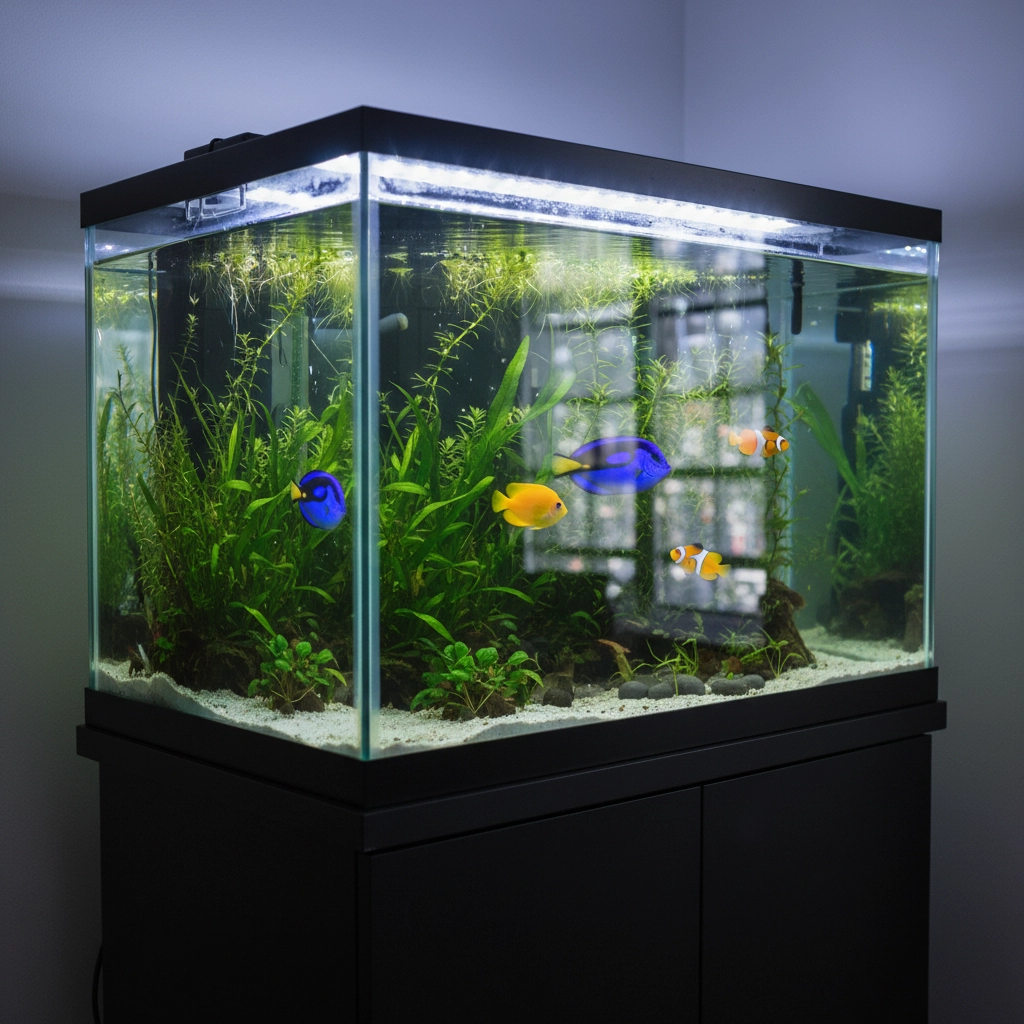
You wouldn't drive a car without a speedometer, so why manage an aquarium without testing your water? This mistake is like flying blind through a storm: you might get lucky, but disaster is always lurking just beneath the surface.
Many aquarists rely on "looking" at their water or judging fish behavior, but by the time you notice problems, it's often too late. Ammonia, nitrite, and other dangerous compounds are invisible assassins that can wreak havoc long before symptoms appear.
The Fix: Invest in quality test kits for ammonia, nitrite, nitrate, and pH at minimum. Test weekly during normal times and daily when establishing new tanks or after adding fish. Keep a log of your results: patterns often reveal problems before they become emergencies. Digital test kits offer convenience, but liquid test kits typically provide more accurate results.
Mistake #3: The Evaporation Trap (Topping Off with the Wrong Water)
Here's where many aquarists get tricked by Mother Nature herself. When water evaporates from your tank, only pure H2O leaves: all the minerals, salts, and dissolved compounds stay behind, becoming increasingly concentrated.
Adding saltwater during top-offs compounds this problem exponentially. What starts as perfect salinity gradually climbs until your marine inhabitants are struggling in conditions resembling the Dead Sea. Even in freshwater tanks, adding untreated tap water during top-offs introduces chlorine and other chemicals that stress your aquatic friends.
The Fix: Always top off evaporation with fresh, dechlorinated water: never saltwater, even in marine tanks. Use an automatic top-off system if possible to maintain stable water levels. For saltwater tanks, monitor specific gravity religiously and adjust gradually if levels have drifted.
Mistake #4: The Water Change Catastrophe (Too Much, Too Fast)

Picture jumping from a warm room into an ice-cold pool: that's what massive water changes feel like to your fish. While water changes are essential, shocking your system with huge volume changes or drastically different parameters can send your aquatic residents into stress mode or worse.
The "nuclear option" of changing 50-75% of your water might seem like a quick fix for poor water quality, but it often creates more problems than it solves. Fish are remarkably adaptable to gradual changes but can't handle sudden environmental shifts.
The Fix: Stick to 10-25% weekly water changes for routine maintenance. Match temperature within 2-3 degrees and pH within 0.2 units of your existing tank water. For emergency situations requiring larger changes, do multiple smaller changes over several days rather than one massive change.
Mistake #5: The Chlorine Killer (Untreated Tap Water)
Municipal tap water might be perfect for drinking, but it's often toxic to aquarium life. Chlorine and chloramine: added to kill bacteria in drinking water: will also destroy the beneficial bacteria in your tank and directly damage your fish's delicate gill tissues.
Even small amounts can cause fish to gasp, exhibit erratic swimming patterns, and become susceptible to diseases. The irony? The very chemicals that make water safe for us make it dangerous for our aquatic friends.
The Fix: Always treat tap water with a high-quality dechlorinator before adding it to your tank. Products containing sodium thiosulfate neutralize chlorine instantly, while those with additional ingredients handle chloramine and heavy metals. For sensitive setups, consider RO (reverse osmosis) water for the ultimate in purity.
Mistake #6: Ignoring the Big Three (pH, Hardness, and Alkalinity)
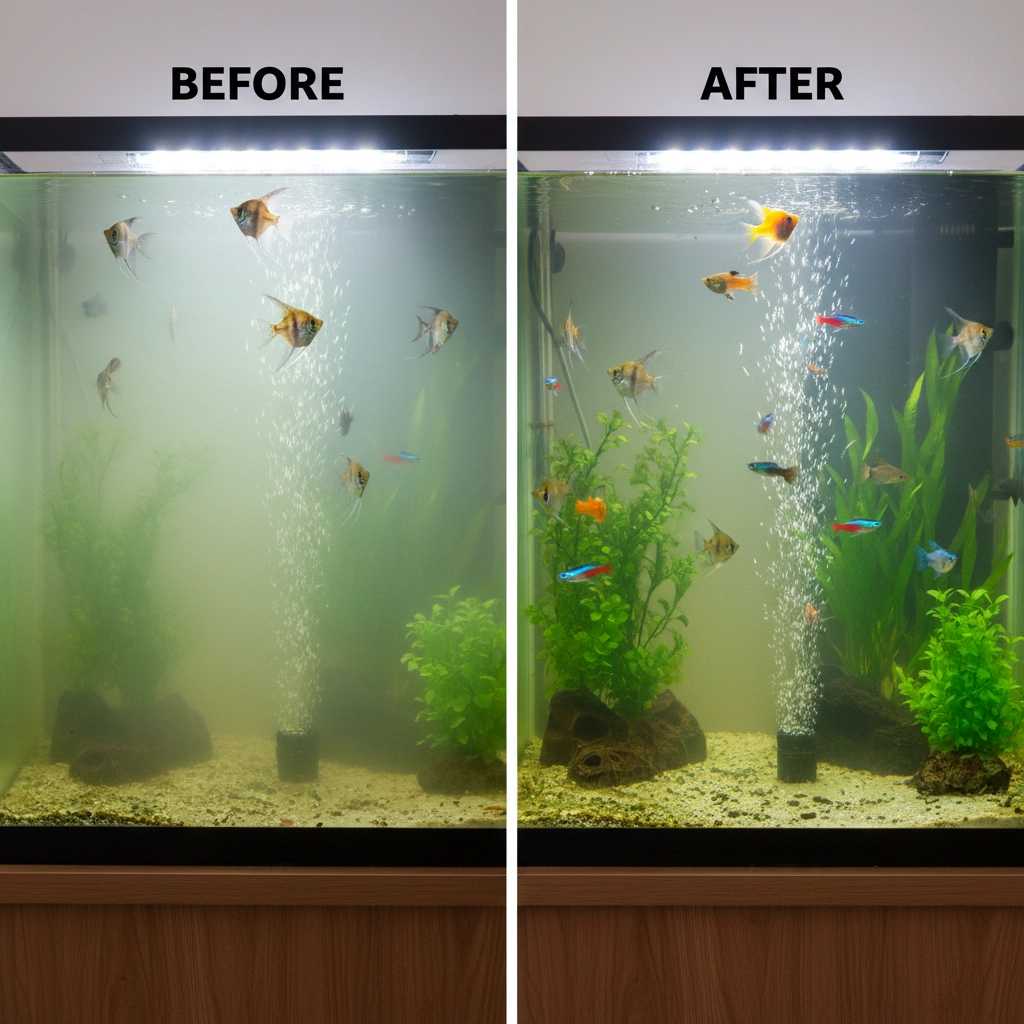
Think of pH, hardness, and alkalinity as the holy trinity of water chemistry: they work together to create stable, healthy conditions. Many aquarists obsess over one while ignoring the others, creating an unstable foundation that leads to constant parameter swings.
pH crashes, hardness fluctuations, and alkalinity depletion can happen gradually, making them easy to miss until fish start showing stress symptoms. These parameters buffer each other, so problems in one area often cascade into others.
The Fix: Test all three regularly and understand their relationships. Alkalinity acts as a pH buffer: maintain it between 3-8 dKH for freshwater tanks. General hardness should match your fish species' requirements. Use appropriate buffers and supplements to maintain stability rather than chasing perfect numbers.
Mistake #7: The Overfeeding Death Spiral
More food doesn't equal healthier fish: it equals polluted water. Excess food decomposes rapidly, producing ammonia and encouraging harmful bacteria growth. This creates a vicious cycle where poor water quality stresses fish, making them more susceptible to disease, leading to more medications that further degrade water quality.
Overfeeding is often emotional rather than practical: we want to show our fish love, but we're actually harming them. Uneaten food also fuels algae blooms and can crash your carefully maintained ecosystem.
The Fix: Feed only what your fish can consume in 2-3 minutes, 1-2 times daily. Skip feeding for a day or two if you suspect overfeeding. Remove uneaten food promptly and adjust portion sizes based on your fish's actual consumption. Remember: a slightly hungry fish is healthier than an overfed one.
Mistake #8: The Stocking Mistake (Too Many Fish, Too Fast)
Your biological filtration system is like a restaurant kitchen: it can only handle so many orders at once. Adding multiple fish simultaneously overwhelms the established bacteria colony, leading to ammonia spikes that can devastate your entire tank.
New aquarists often get excited and want to fill their tank immediately, but patience is crucial for long-term success. Each fish added increases the bioload, and your filtration system needs time to adapt and grow.
The Fix: Follow the "one fish per week" rule for established tanks. This allows your biological filter to adjust gradually to increased waste production. Quarantine new fish before adding them to prevent disease introduction. Monitor water parameters closely when adding new inhabitants and be prepared to increase water change frequency temporarily.
Mistake #9: Temperature Shock Therapy
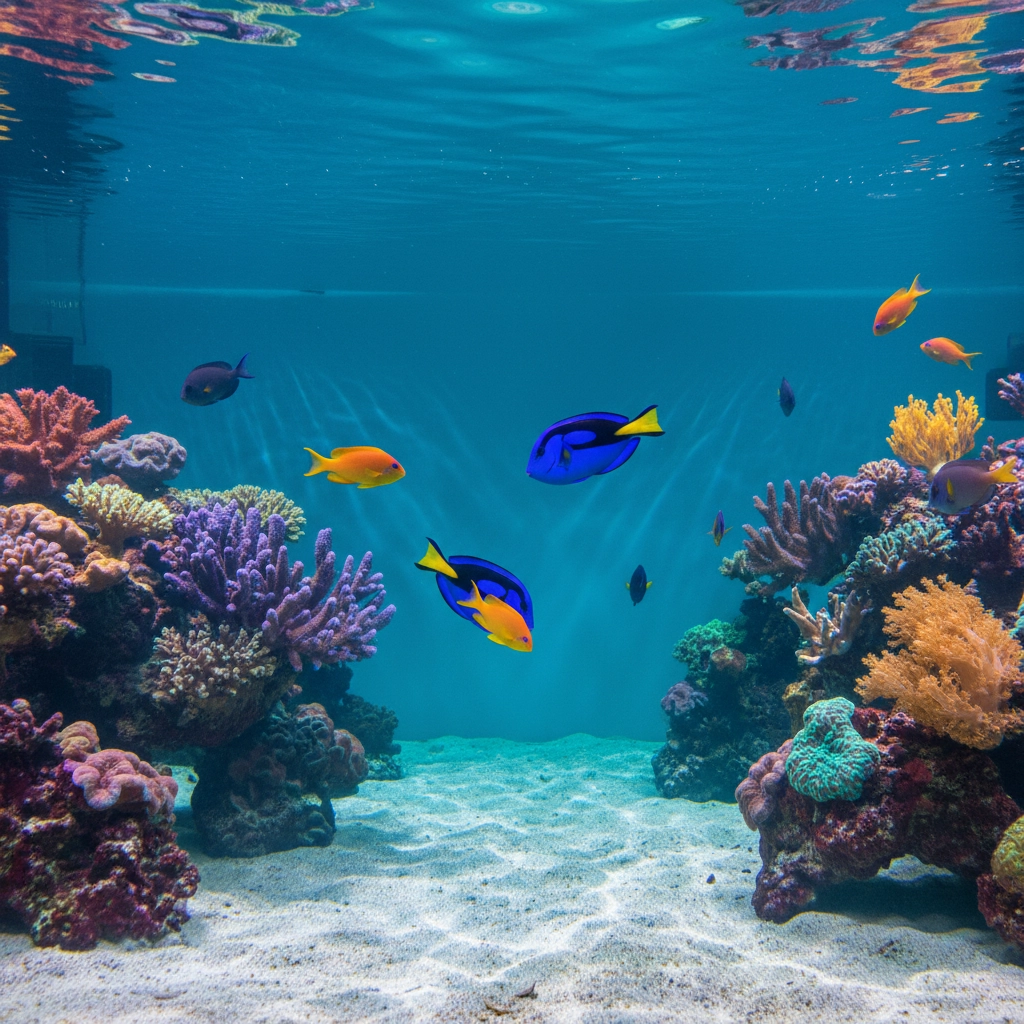
Fish are cold-blooded creatures that rely entirely on their environment for temperature regulation. Sudden temperature changes: even a few degrees: can shock their systems, suppress immune function, and trigger disease outbreaks.
This commonly happens during water changes when new water isn't properly temperature-matched, or when aquarium heaters malfunction. Some aquarists also make the mistake of rapidly adjusting temperatures when treating diseases, causing more stress than the original problem.
The Fix: Always match new water temperature to within 2-3 degrees of your tank. Use reliable heaters with backup temperature monitoring. Make temperature adjustments gradually: no more than 2-3 degrees per day. Invest in a quality thermometer and check it regularly.
Mistake #10: The Quick Fix Mentality (Chemical Band-Aids)
When water parameters go wrong, many aquarists reach for chemical solutions: pH adjusters, ammonia neutralizers, nitrate removers, and other "miracle" products. While these can provide temporary relief, they often create dependency and mask underlying problems rather than solving them.
Chemical additives can interact in unexpected ways, creating new problems while temporarily fixing others. They also teach us to rely on products rather than understanding proper aquarium management principles.
The Fix: Address root causes rather than symptoms. Poor water quality usually stems from overfeeding, overstocking, inadequate filtration, or insufficient maintenance. Regular water changes, proper feeding, and adequate filtration solve most problems naturally. Use chemical products sparingly and only as temporary measures while addressing underlying issues.
Your Action Plan for Crystal-Clear Success
Ready to transform your aquarium management? Start by testing your current water parameters: all of them. Document your results and compare them to your fish species' requirements. Identify which of these mistakes you might be making and tackle them systematically.
Remember, successful aquarium keeping is a marathon, not a sprint. Small, consistent efforts create thriving underwater ecosystems that bring joy for years to come. Your fish will reward proper water chemistry with vibrant colors, active behavior, and impressive longevity.
The journey to mastering water chemistry might seem daunting, but every expert aquarist started exactly where you are now. With patience, consistency, and the right knowledge, you'll soon be creating the captivating aquatic paradise of your dreams.
Ready to dive deeper into your aquarium adventure? Follow us on social media for daily tips, behind-the-scenes content, and inspiration from fellow aquarists around the globe! Have questions about your specific setup? Don't hesitate to reach out: we love helping fellow enthusiasts navigate their aquatic journeys. And here's something exciting: share photos of your thriving aquarium with us for a chance to be featured in our community showcase! We can't wait to see the amazing underwater worlds you're creating.
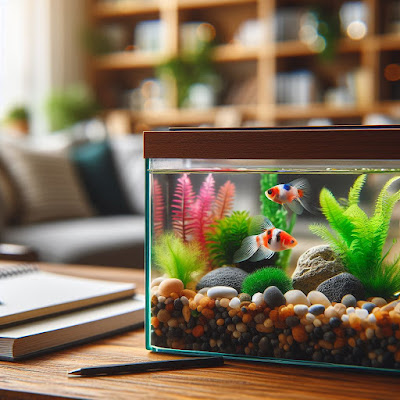






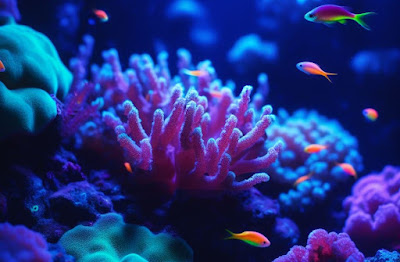
.png)
